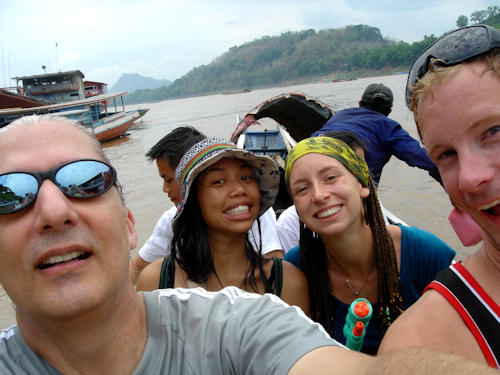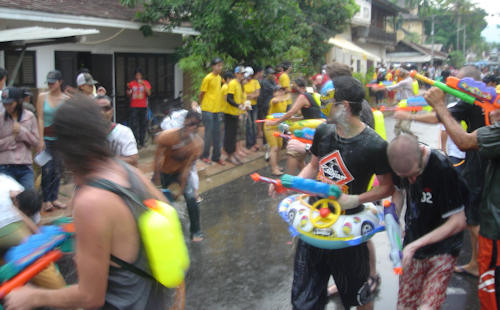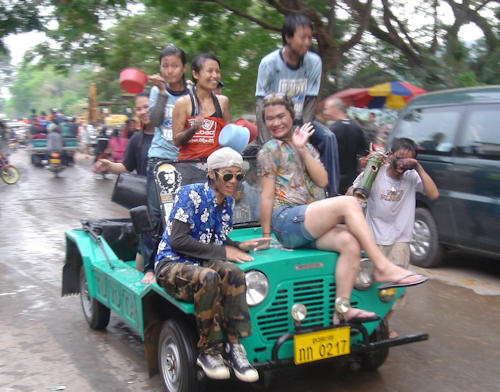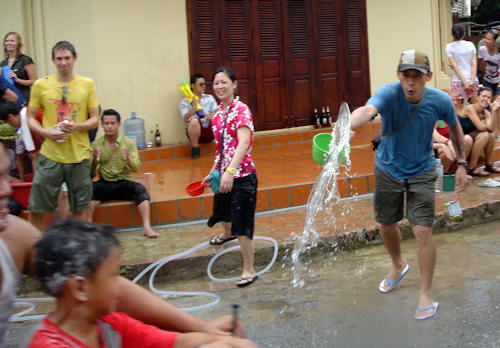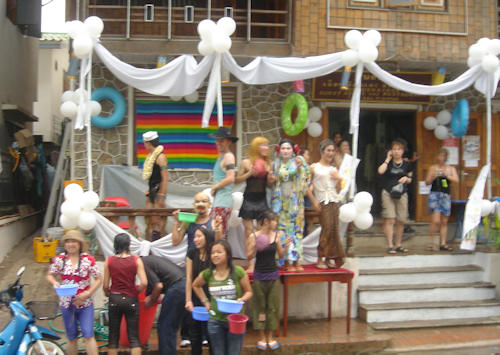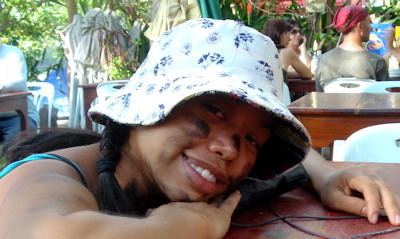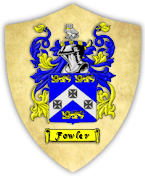History and Culture
Celebrate Pi Mai Lao (Lao New Year)
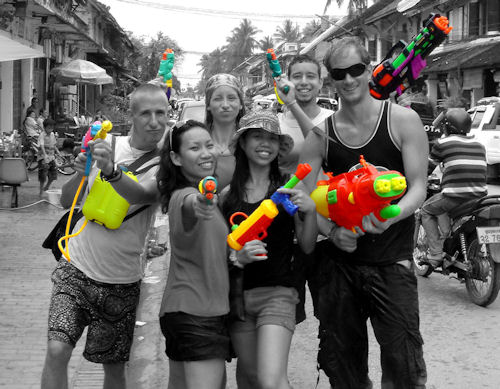


I know it appears as if I've misspelled Laos above, but I assure you, it's no mistake - I'm showing it the way the locals pronounce it. The name of their country is actually "The Lao People's Democratic Republic", or "The Lao PDR" for short. From what I understand, it was the French who added the "s" as the plural form of Lao (people).
The timing of my arrival in Luang Prabang in central Laos was one of those happy accidents. I didn't realize that Lao New Year was only a week away until I arrived - and my guidebook said that Luang Prabang was the place to be for Pi Mai Lao. Lucky me! And I have to say, I can't remember when I've had so much fun!
For those of you who are unfamiliar with Lao New Year (or Thai New Year, since they are essentially the same), it's basically one big water fight. I had been lucky enough to experience it in Thailand once before, but that was one afternoon of craziness on Khao San road in Bangkok. In Luang Prabang, it started at noon and lasted until dusk every day for four days running.
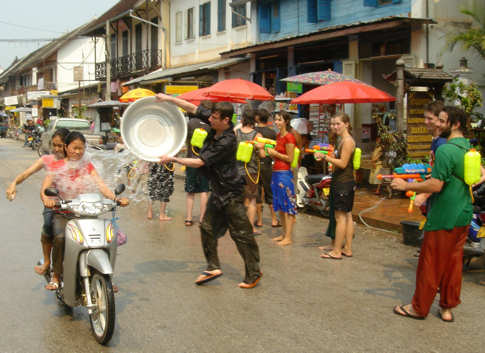
I've had the good fortune to experience this holiday on two separate visits to Laos. And I found that the attitude of the Lao people is one reason it is so enjoyable. On my first visit to Luang Prabang, I hooked up with a fun-loving group of locals (which included a woman who owned a restaurant on the main street)
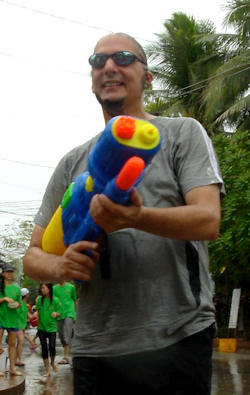 who had set up a "water station" in front of the restaurant every afternoon. There was a constant stream of people riding by in cars and trucks, on motorbikes and bicycles, and of course, on foot.
who had set up a "water station" in front of the restaurant every afternoon. There was a constant stream of people riding by in cars and trucks, on motorbikes and bicycles, and of course, on foot.
Some Lao girls on motorbikes were dressed in fancy traditional Lao outfits, obviously on their way to work or school. Their strategy was to try to ride by as quickly as possible to avoid getting too wet. But sometimes, I would stand in front of them in the street, with my arms outstretched to both sides, so they had to stop (to keep from running over me). Once stopped, they were, quite literally, sitting ducks.
On one occasion, after I got two girls to stop, I slowly poured my full pail of cold water over the head of the driver. She cringed all the way through her dowsing, and when my pail was completely empty and she was thoroughly soaked, she put her hands together in front of her, bowed her head and said, "Thank you. Happy New Year!" If I tried something like that in the U.S., I'd be lucky to escape with my life.
On the second day, I went with my new-found friends by boat across the Mehkong River to a huge sandbar, where we built (or rather, they built) a small "stupa" out of sand, then knelt around it singing and praying...
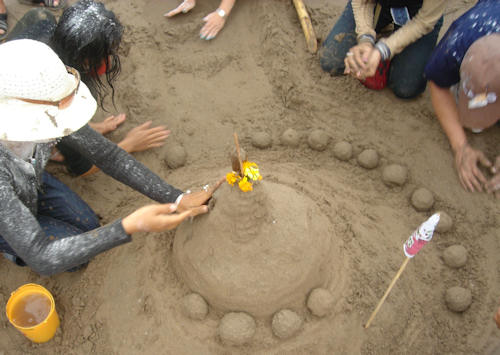
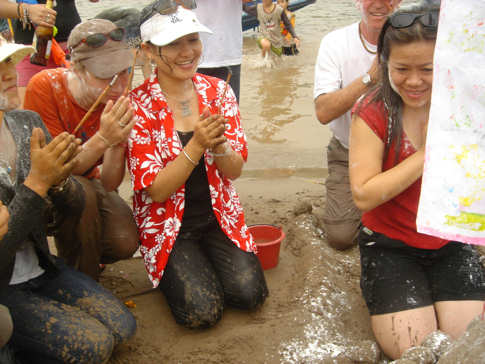
Another interesting aspect of Pi Mai Lao is the smearing of a white paste (made from water and flour, I suppose) on each other's faces. I'm not really sure the tradition behind this practice, but I think it's a way to wish the "victim" a Happy New Year and to show respect. In Thailand, I only saw white paste, but in Laos, they had other colors as well, ranging from white all through the spectrum to black...

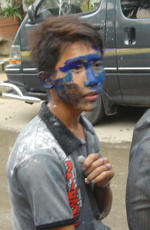
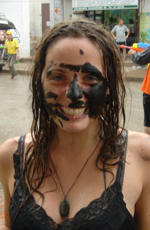
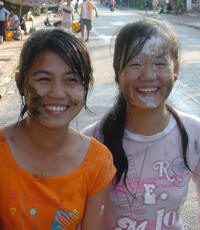
One other thing I saw in Thailand, but not in Laos, was how the Thai teenagers would use this holiday as their one day to be a bit naughty. I saw more than a few young girls with white handprints on their breasts, outside their t-shirts, that is - no doubt put there by the teenaged Thai boys. It seemed as though the girls "wore" the handprints like badges of honor. All in good fun, I'm sure.
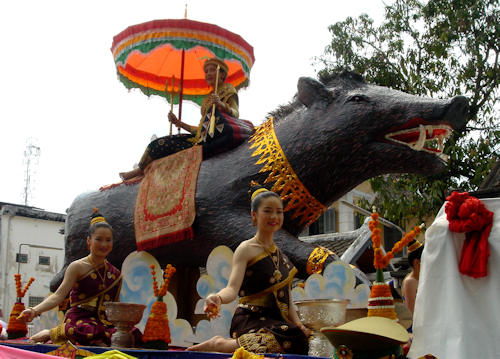
On the last day of this long and exhausting holiday period, they have a parade down the main street of Luang Prabang, complete with a float carrying the newly-crowned Miss Pi Mai Lao (above photo). In contrast to the unassuming orange robes of the monks, the remaining participants were sporting interesting and colorful costumes indeed...
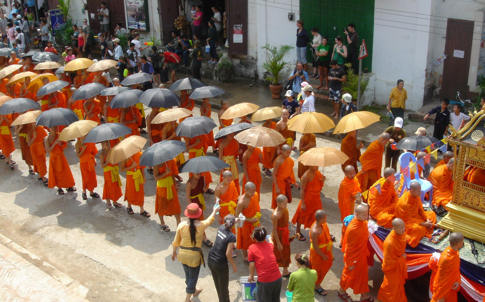

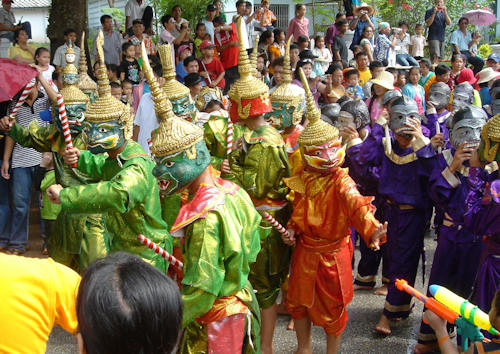
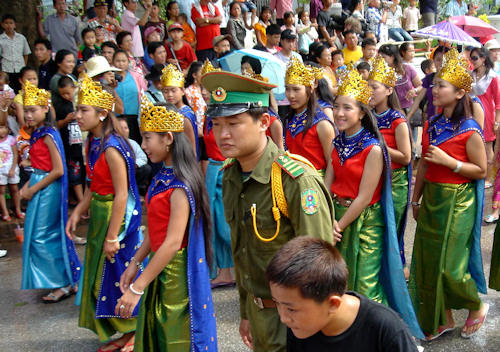
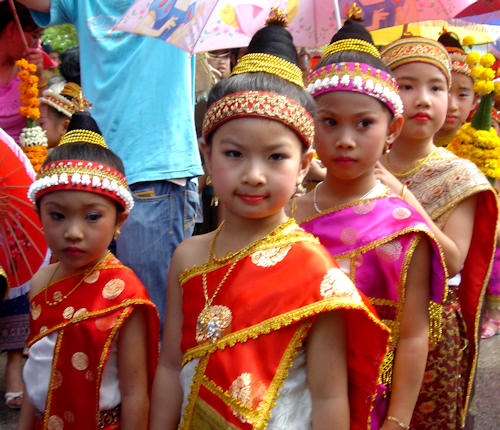
As I said before, it was more fun than I've had in a long time. But, alas, all good things must come to an end, so I'll leave you now to enjoy these last few photos (and videos) from this most interesting festival...
